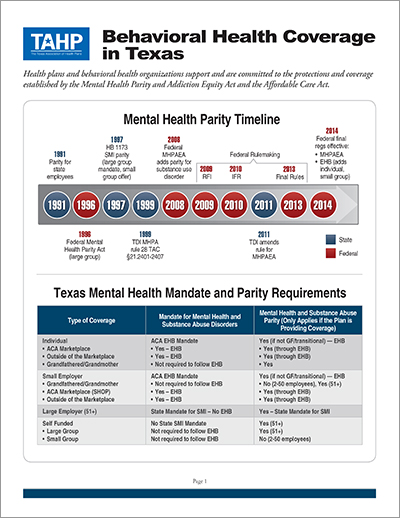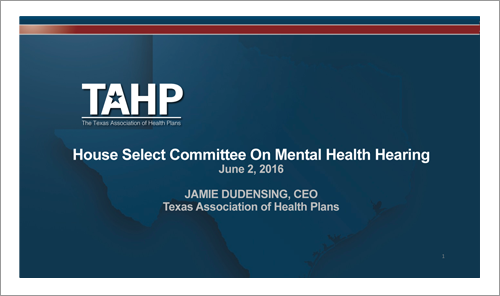Ensuring Access to Quality Behavioral Health Care

Health plans and behavioral health care organizations support the protections established by the Mental Health Parity and Addiction Equity Act (MHPAEA). Beyond meeting the parity requirements of MHPAEA, health plans have demonstrated strong leadership in pioneering innovative programs to meet the health care needs of patients with mental health and substance use disorders, often through partnerships with behavioral health care organizations. These programs are designed to raise member awareness of the importance and availability of behavioral health care, to encourage discussions with providers, and to focus on proactive identification of behavioral health needs.
Behavioral Health Resources:
Behavioral Health Coverage in Texas
A resource guide on health plans and behavioral health organizations’ support for to the protections and coverage established by the Mental Health Parity and Addiction Equity Act and the Affordable Care Act.
February 2017
Health plans support behavioral health parity and have also demonstrated strong leadership in pioneering innovative programs to meet the health care needs of patients with mental health and substance use disorders, often through partnerships with behavioral health care organizations.
TAHP Testimony to House Select Committee on Mental Health
Presentation on mental health and substance abuse parity in Medicaid and private health insurance.
June 2016
This presentation addresses key considerations for mental health and substance abuse treatment, and includes the lack of coverage options for low-income adults, care provider shortages, lack of coordination and integration of MH/SUD services with medical services, and that mental health and substance abuse coverage is very limited in what is provided.
TDI Testimony to House Select Committee on Mental Health Hearing
Presentation on regulating mental health parity in insurance coverage.
June 2016
This presentation outlines the issues in regulating mental health parity in insurance coverage. It includes health insurance regulation, parity regulations (history, state and federal requirements, and compliance), network adequacy, and medical necessity.




